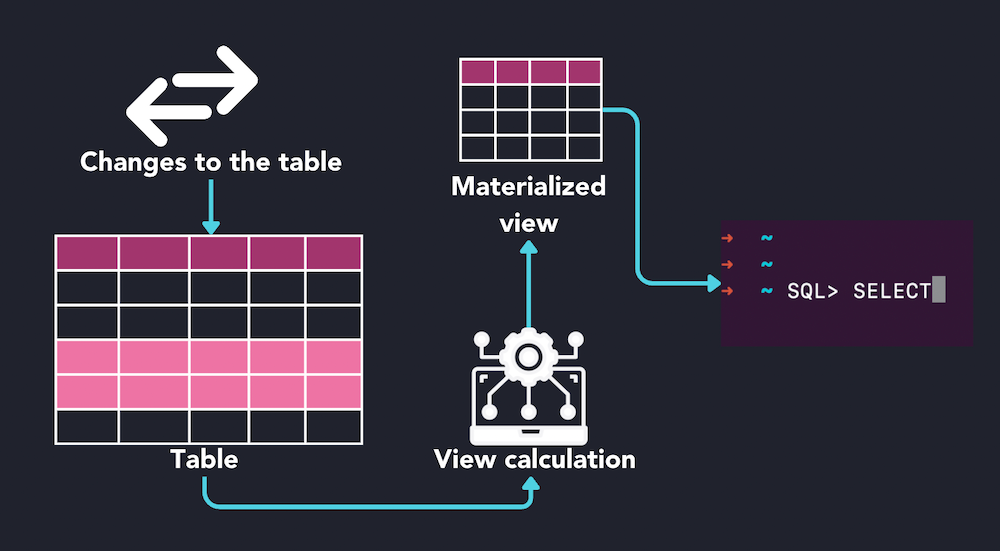A materialized view is a database object that stores results from a pre-computed query. It is often used when the results of complex queries are accessed frequently. By pre-computing and storing this data, users can more quickly access this data rather than re-computing potentially expensive queries on the fly. Materialized views are refreshed periodically or triggered by updates to the underlying data to keep the resulting view up to date.

Materialized views vs. traditional views
Materialized views differ from traditional views in that they are physically stored in the database. Traditional views are virtual in nature and executed on the fly when they are accessed. Materialized views are pre-computed and physically stored. Therefore, when querying against the materialized view, the database does not need to re-run the associated query every time. Essentially, materialized view trades storage for query performance.
Refresh strategies
There are several strategies for refreshing materialized views depending on the database implementation:
- Incremental/delta refresh: Incremental (or delta) refresh updates the materialized view with only the changes made to the underlying data since the last query. The system must keep track of some metadata (e.g., timestamp, transaction log) to determine the delta and only update the changes.
- Complete refresh: Materialized views are completely recalculated by re-issuing the underlying query. Complete refresh ensures that the view is always up to date, but is slower and more resource intensive compared to incremental refresh.
- Manual/on-demand refresh: Manual or on-demand refresh only triggers updates to the materialized view when a user or a system explicitly invokes the refresh command. This is useful when the view does not need to update frequently.
- Automatic refresh: Materialized views can also be refreshed automatically based on some triggers or a predefined schedule via some trigger or predefined schedule.
Benefits and limitations
Materialized views provide a cost-efficient way to pre-compute and store resource-intensive operations that are frequently accessed. For example, you may be collecting sensor data from your IoT system. If you need to calculate the average data point (e.g., average temperature, cost) over a time period, creating a materialized view will return the results much faster than computing them on demand. Also, since materialized views update periodically or on some triggers, it can be more resource efficient than computing these every time.
On the other hand, since material views are physically stored, it will incur a bit more storage than simply utilizing views or running queries on demand. If the query is not accessed frequently, the storage-to-performance tradeoff may not be favorable. Lastly, materialized views are read-only, so it is not recommended when the results may need some modifications.